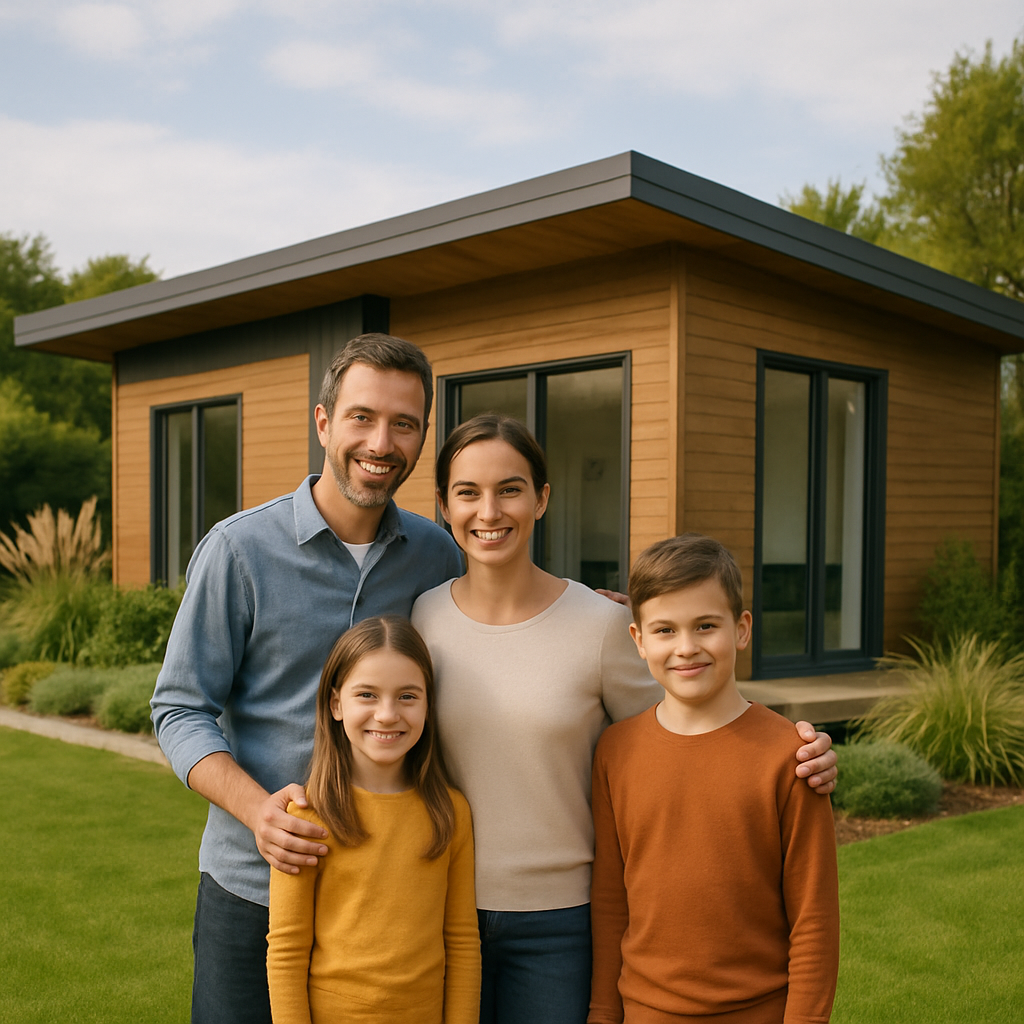Choosing a prefabricated home in Italy has proved to be an excellent choice for many people who seek to live economically and ecologically. As the need for eco-living and energy-saving rises higher than ever before every day, prefab homes offer a great chance to plan a cozy, modern home without the waiting period associated with conventional construction.
Yet, one needs to be attentive to the real costs, legal requirements, and how to pick the best one that will suit you.
Table of Contents
ToggleWhy Prefabricated Houses Are a Smart Choice
So, why are they better? Prefabricated homes are a mix of the old and the new. Traditional building with natural materials like wood provides deference to nature with the advantage of an entire house that is complete and functional. The factory process allows no loss of time and material and is therefore a smart choice for a person who values efficiency and sustainability.
More and more people are considering modular homes and wood homes to build their dream home in no time and with minimal impact on the environment. Ensuring maximum energy efficiency, these homes not only reduce carbon footprints but also provide utility bill savings in the long term.

Costs to Consider
Now, let’s break down the cost. The cost of an Italian prefabricated house depends on a lot of variables, starting with the type of material and level of customization. Simple structures can start from around €1,200 to €1,800 per square meter. More complex ones with enhanced energy efficiency and custom finishes can cost between €2,500 to €3,500 per square meter.
Remember that the cost quotation probably only accounts for the house. Land preparation, foundations, hooking up utilities, permits, and taxes are fees that must be correctly calculated. Prices vary vastly all over Italy; generally it will cost more towards the coast and in the north than it would in rural southern Italy.
Prior to commencing any project, a total estimate of all the construction stages and possible extra costs should be provided.
Regulatory Requirements
Constructing a prefabricated home in Italy has the same legal requirements as building a traditional home. There must be a full building permit (Permesso di Costruire) issued prior to the work commencing. Like traditional construction, it’s necessary to confirm that the land is zoned for residential use under local zoning laws.
The prefabricated houses must comply with Italy’s strict anti-seismic building regulations, which is a critical requirement since the country is prone to earthquakes. They also have to be energy certified an Energy Performance Certificate (EPC) is required to ensure that the building complies with national standards of energy efficiency.
Special attention is needed if the property is located near nature reserves, coastlines, or historical sites. In these areas, there might be additional permits needed or stricter building codes, which can affect your project’s feasibility or timeline.
Since building laws may vary substantially between one town or city and the next, it is wise always to make some preliminary contact with the local Comune before land is bought or any contractual arrangement is made. Failure to do so, worse, commencing to build without appropriate permission has devastating consequences in terms of sizeable fines or, in extreme cases, a notice to demolish. All of these dangers are easily avoided if a professional lawyer or planning officer is consulted well in advance.
Fiscal Advantages of Prefabricated Homes
Italy offers several tax incentives and fiscal benefits that can significantly reduce the cost of building a prefab house:
- Ecobonus
Property owners who improve energy efficiency—e.g., through the installation of thermal insulation or solar panels—can deduct a significant percentage (up to 65%) of the related expenses.
- Superbonus 110% (temporary)
While recently modified, this government-backed initiative previously allowed for full tax credit reimbursement of eligible energy and seismic upgrades.
- Reduced VAT
Prefab homes that are “first homes” may qualify for a reduced VAT rate (4%) instead of the standard 22%.
- Exemptions on IMU and TASI
If your prefab is your primary residence, you may be exempt from certain municipal taxes.
Choosing the Proper Prefabricated House
Finding the right prefab home is about balancing quality, design, and compliance. It is wise to select models that are built with durable materials, such as certified wood, and that integrate sustainable technologies like solar panels or passive energy-saving designs.
Options for customization vary from modular homes with adjustable floor plans to homogeneous, flat-pack homes. Always make sure the supplier has a background in the Italian market and is capable of assisting with local regulatory problems.
Also, visit the warranties offered and ensure the home is in full accordance with European Union regulations. Proper planning and professional guidance are the most effective methods of avoiding hidden expenses and delays.
It’s All About Smart Planning
Having your own home is a big step, and with a prefabricated one, you get to do it with greater flexibility, control, and openness. Modern prefab homes offer the charm of wooden homes, the benefits of green building, and the safety of energy-efficient living.
However, all accomplishment starts with planning, understanding the prices, having knowledge of the laws, and choosing the right partners.
Italian prefabricated homes reveal the promise of a less complicated, faster, and greener method to construct your ideal home. Through understanding the economic and legal terms in advance, you can walk the journey confidently and build a future that is not only beautiful but also secure.
Would you like to read more about similar topics? Then, take a look at our related articles here: Main house: what is it? What benefits?, Renovating a House in Italy and Buying a house in Italy: What to be careful about.
🏠 Quiz: Prefabricated Homes in Italy
1. What is the average starting cost per square meter for a simple prefab house in Italy?
2. How much could you expect to spend for a 100 m² high-efficiency prefab home with custom finishes?
3. How much can you save with energy efficiency in a 100 m² prefab house over time?
4. Which of the following incentives could reduce the VAT rate to 4% for prefab homes?
5. Can you begin building a prefab house in Italy without a building permit?




